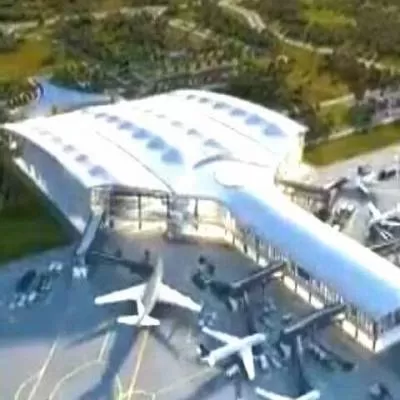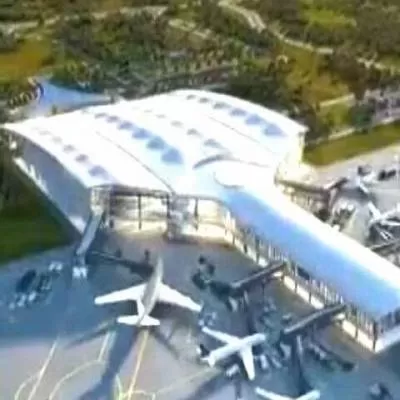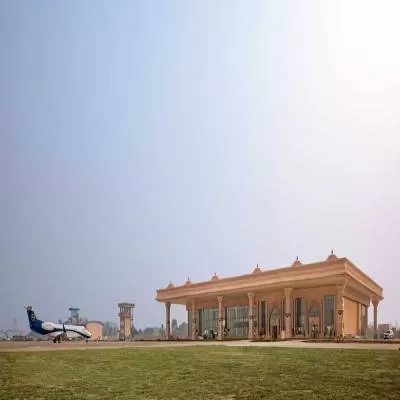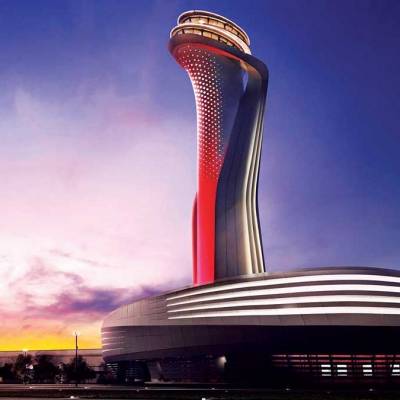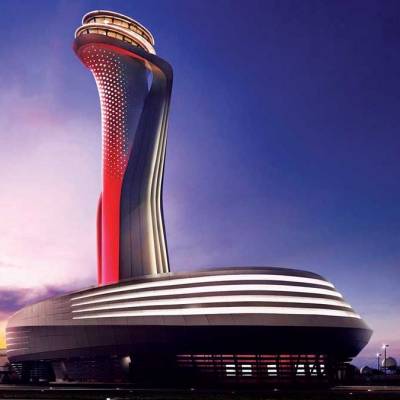- Home
- Infrastructure Transport
- AVIATION & AIRPORTS
- The future of pre-engineered structures looks positive
The future of pre-engineered structures looks positive
Value engineering, quality management, expertise in pre-engineered structures and solar infrastructure; make Satec Envir Engineering a turnkey solutions provider in the infrastructure space. The company has positioned itself strongly in the urban and rural infrastructure market and constructed several colonies for the labour class as well as high profile engineers across India and overseas. Till date, it has developed projects covering more than 230,000 sq m (approx) in India. Amarprakash Agarwal, Managing Director, elucidates on the current market for pre-fabricated structures in India.
What is the current market for prefabricated structures in India?
Currently, there is a massive upgradation in India's infrastructure due to the adoption of new technologies. The market for prefabricated structures particularly is booming as both industrial and commercial sectors use prefab products. As economic surveys indicate, the demand for pre-engineered buildings was estimated to have been 450,000 tpa last year.
How cost effective is it to install pre-engineered structures on site?
Pre-engineered structures reduce the construction period and can be installed as per the client's requirement. Similarly, Steel and other raw materials that are used for pre-engineered buildings have to go through strict quality checks at the manufacturing unit which ensures their high quality. Using prefab materials also makes buildings more flexible for expansion and modification. Most of these modular buildings have independent blocks that can be added or removed as per requirement.
As these structures are assembled by trained professionals and pre-made in factory, there is zero wastage as compared to the conventional construction. These factors make pre-engineering structures more cost-effective.
Highlight the advantages of prefab structures as compared to conventional buildings?
Prefabricated structures are gaining popularity mainly due to their advantages over the conventional structures. Besides being high on quality and manufactured in a controlled environment, their computerised design and professional execution lends them high precision. Also, these buildings are insulated and therefore reduce the cost of heating and cooling devices.
Is there a need for awareness in the Indian market in terms of the uses of prefab structures?
As compared to the last decade, there is a growing awareness in the Indian prefab structures market. Companies are opening up to the international market, leading to the growth in the development of these structures in the country. But, though they are being used in the industrial and commercial sector, their usage in the residential sector is yet limited.
Touch upon some landmark prefabricated structures as well as efficient prefab products in India?
Today, all major commercial buildings in India are pre-engineered buildings. Some landmark examples include the new T3 at Delhi Airport and the Delhi Metro.
'The government needs to promote the use of prefabricated structures for the development of industrial and residential complexes.' Your comments?
As per recent economic development studies, India needs around 12 million low-cost housing. Prefab technology is the only way to satisfy this massive demand. The government has already started promoting prefab residential projects in Mumbai and Delhi. We recently also held an awareness workshop in Bhopal that witnessed phenomenal participation from the construction community. Yet, the government needs to spread more awareness and initiate projects that have mandatory prefabricated structure.
How do you view the future of pre-engineered products and structures in India?
Although there has been a slight decline in the economic growth, the future of pre-engineered products and structures looks positive due to its advantages and growing awareness.
If compared to the global demand, which was $65 billion in 2011 with Asia forming a major chunk, the future looks good.
(Communication by the management of the company)
Amarprakash Agarwal, Managing Director, Satec Envir Engineering (I) Value engineering, quality management, expertise in pre-engineered structures and solar infrastructure; make Satec Envir Engineering a turnkey solutions provider in the infrastructure space. The company has positioned itself strongly in the urban and rural infrastructure market and constructed several colonies for the labour class as well as high profile engineers across India and overseas. Till date, it has developed projects covering more than 230,000 sq m (approx) in India. Amarprakash Agarwal, Managing Director, elucidates on the current market for pre-fabricated structures in India. What is the current market for prefabricated structures in India? Currently, there is a massive upgradation in India's infrastructure due to the adoption of new technologies. The market for prefabricated structures particularly is booming as both industrial and commercial sectors use prefab products. As economic surveys indicate, the demand for pre-engineered buildings was estimated to have been 450,000 tpa last year. How cost effective is it to install pre-engineered structures on site? Pre-engineered structures reduce the construction period and can be installed as per the client's requirement. Similarly, Steel and other raw materials that are used for pre-engineered buildings have to go through strict quality checks at the manufacturing unit which ensures their high quality. Using prefab materials also makes buildings more flexible for expansion and modification. Most of these modular buildings have independent blocks that can be added or removed as per requirement. As these structures are assembled by trained professionals and pre-made in factory, there is zero wastage as compared to the conventional construction. These factors make pre-engineering structures more cost-effective. Highlight the advantages of prefab structures as compared to conventional buildings? Prefabricated structures are gaining popularity mainly due to their advantages over the conventional structures. Besides being high on quality and manufactured in a controlled environment, their computerised design and professional execution lends them high precision. Also, these buildings are insulated and therefore reduce the cost of heating and cooling devices. Is there a need for awareness in the Indian market in terms of the uses of prefab structures? As compared to the last decade, there is a growing awareness in the Indian prefab structures market. Companies are opening up to the international market, leading to the growth in the development of these structures in the country. But, though they are being used in the industrial and commercial sector, their usage in the residential sector is yet limited. Touch upon some landmark prefabricated structures as well as efficient prefab products in India? Today, all major commercial buildings in India are pre-engineered buildings. Some landmark examples include the new T3 at Delhi Airport and the Delhi Metro. 'The government needs to promote the use of prefabricated structures for the development of industrial and residential complexes.' Your comments? As per recent economic development studies, India needs around 12 million low-cost housing. Prefab technology is the only way to satisfy this massive demand. The government has already started promoting prefab residential projects in Mumbai and Delhi. We recently also held an awareness workshop in Bhopal that witnessed phenomenal participation from the construction community. Yet, the government needs to spread more awareness and initiate projects that have mandatory prefabricated structure. How do you view the future of pre-engineered products and structures in India? Although there has been a slight decline in the economic growth, the future of pre-engineered products and structures looks positive due to its advantages and growing awareness. If compared to the global demand, which was $65 billion in 2011 with Asia forming a major chunk, the future looks good. (Communication by the management of the company)



